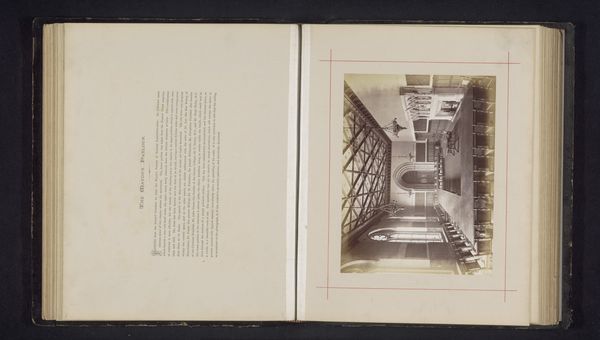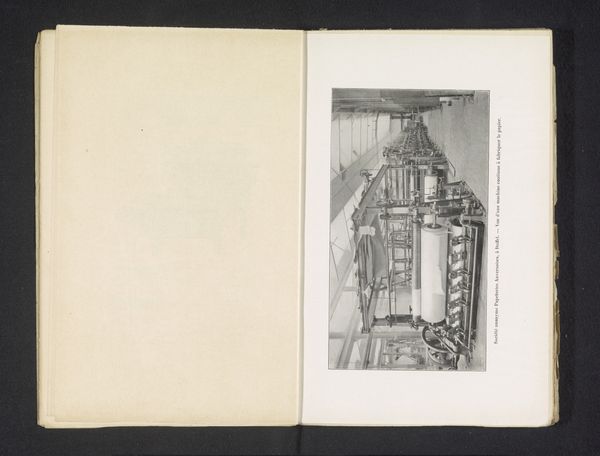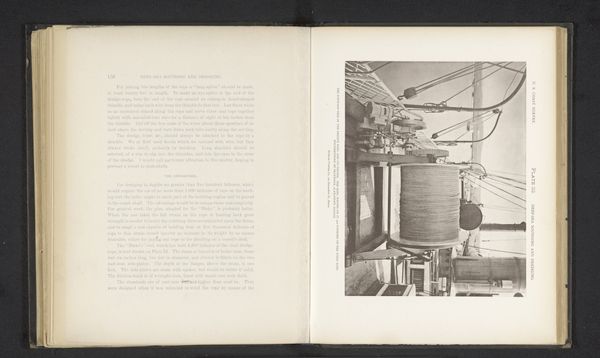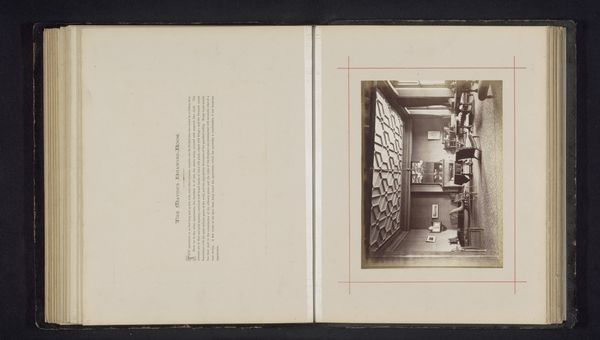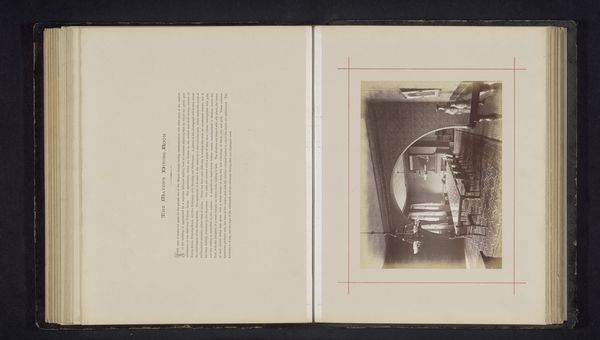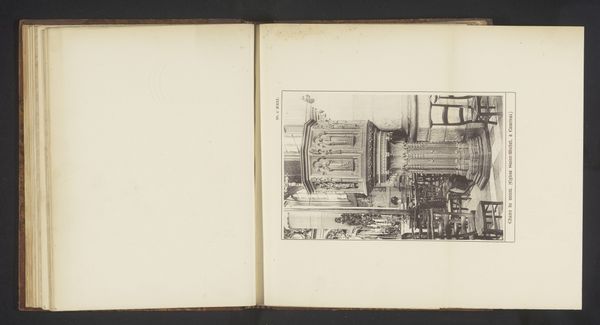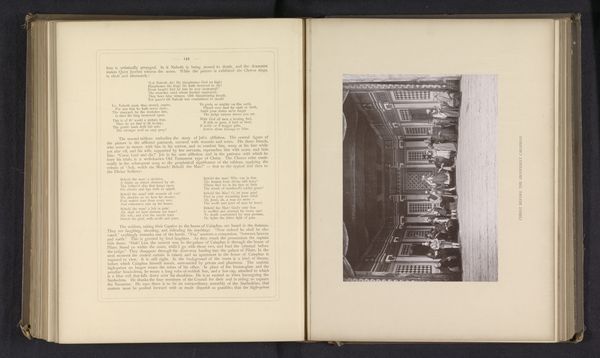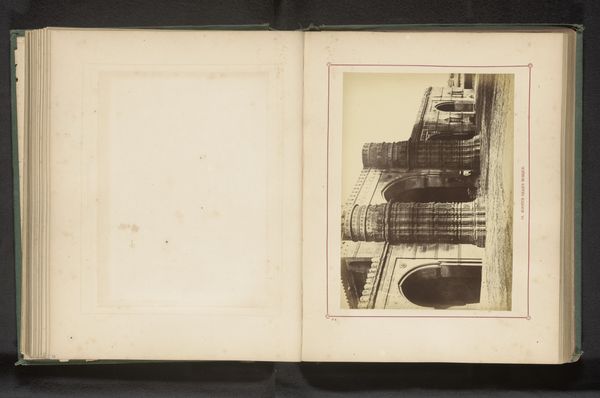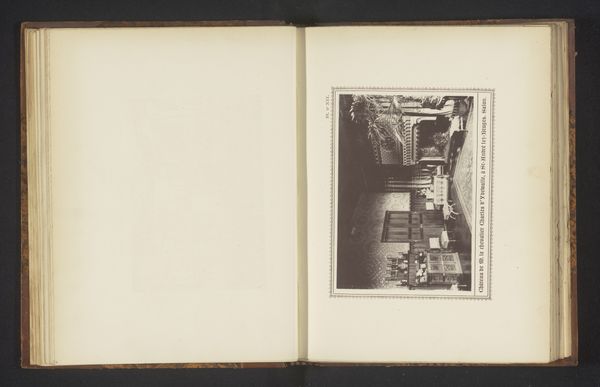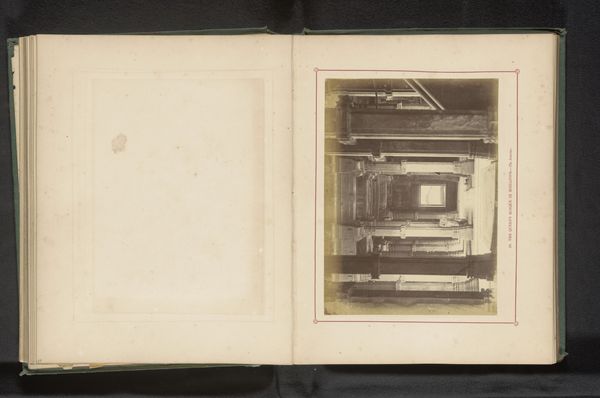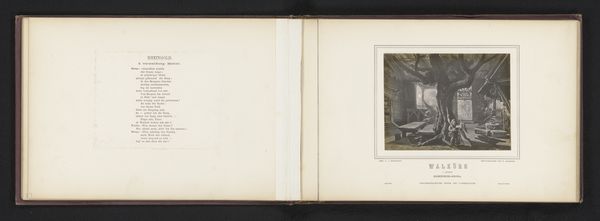
print, photography
# print
#
photography
#
cityscape
Dimensions: height 162 mm, width 213 mm
Copyright: Rijks Museum: Open Domain
Curator: At first glance, the photograph’s sepia tones and rigid perspective suggest stability, but there's a peculiar weight. Editor: Yes, that heavy linearity has almost an oppressive quality. We're looking at “Kantoor in het Stadhuis van Manchester,” or "Office in the Manchester City Hall", a photograph dating to 1877, and credited to J. McLeod. The perspective gives such depth. Curator: Precisely! Notice how the photograph uses architecture as a means to convey stability, order, and progress, key ideals for Victorian England and its empire. The grand arches speak of Roman civic duty, while the new City Halls constructed across Britain represented civic pride and an intention toward advancement. Editor: The use of the arch as a load-bearing symbol seems very prominent here, doesn't it? I am also taken by the natural light, that falls at the end of the passage, but even still, the depth is claustrophobic in feeling because of the symmetry, as though the architecture becomes an idol or idea to emulate. Curator: Indeed. This period of monumental civic works reflected the social role of architecture, its imposing nature meant to inspire awe and deference toward governance. Consider also the implied labour behind such spaces, made at a period of labor movements in Britain and globally. Editor: Interesting, so the City Hall became both a symbol of control and wealth derived by labor itself. Do you feel that McLeod's photograph critiques, celebrates, or perhaps even omits the social climate of his era? Curator: I think this photograph serves to reflect its moment; capturing a monument of British innovation while tacitly communicating its values and visual vernaculars to other administrative centers and aspiring nations across the empire. Editor: I see this image so differently after our conversation. Before it felt rigid, and monumental, now it resonates with more of the human stories beneath it's creation, an archive of civic space and of the individuals tied up within. Curator: Yes, and this exploration shows how symbols gain depth when viewed from the vantage point of a critical historical context.
Comments
No comments
Be the first to comment and join the conversation on the ultimate creative platform.

